

Hunters are killing millions of animals, and 1 in 8 of those are endangered. About 1.7 million animal “trophies” have been exported across borders by hunters in the last decade, according to a new report.
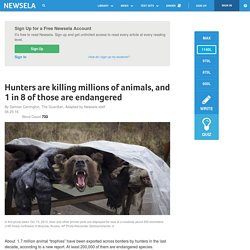
At least 200,000 of them are endangered species. The report found that American hunters are by far the largest killers of trophy animals. Half of all the 11,000 lions shot in the last decade were by Americans. The issue came to global attention in July 2015 after an American dentist paid more than $50,000 to kill a lion called Cecil. The male lion was being tracked by conservation scientists in Zimbabwe.
The report from the International Fund for Animal Welfare (IFAW), based on official records, sheds new light on the scale of the international trophy-hunting industry. It found the number of lions hunted for trophies went up by 3 times to 1,500 a year in the last 10 years, while the number of elephants killed by hunters more than doubled to 1,600. Worldwide Demand. Animal Testing. Hunters are killing millions of animals, and 1 in 8 of those are endangered.
All This For The Horn. How do we stop this slaughter?
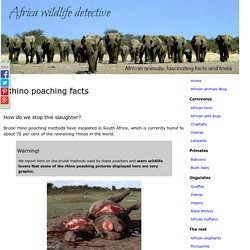
Brutal rhino poaching methods have escalated in South Africa, which is currently home to about 70 per cent of the remaining rhinos in the world. Warning! We report here on the brutal methods used by these poachers and warn wildlife lovers that some of the rhino poaching pictures displayed here are very graphic. The rhino poaching statistics says it all. Rhino poaching on the rise in South Africa Update 2016 For the first time in almost a decade, the number of rhinos poached in South Africa, declined from the record number of 1,215 rhinos poached you see in the above graph to 1,175 in 2015. This slight reduction was mainly as a result of the translocation of rhinos to more secure reserves, and improved security around Kruger National Park where the most rhinos in South Africa stay.
The result of this trend? Their conservation status is now: Reasons for rhino poaching Demand from China and Vietnam have elevated the price of rhino horns to new levels. Poor rhino eyesight. Elephant Slave. Kabu the Elephant has had to endure things that will break your heart to learn about.

For at least 20 years, this amazing animal has been forced to work like a slave in Southeast Asia. Despite an injury that left one of her front limbs painfully misshapen, poor Kabu was continually kept in shackles and forced to haul heavy logs up and down a mountainside. Not only had Kabu been made to endure physical torment, she was also made to suffer mentally. During her time in the field where she worked, Kabu had given birth to two offspring. Testing On Chimps Ended. It was two years ago that most of the chimpanzees kept by the government for medical testing were “retired,” or released to animal sanctuaries to live out their lives minus the pokes and prods.
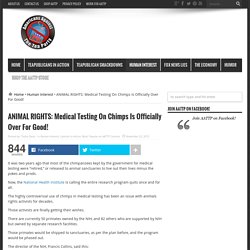
Now, the National Health Institute is calling the entire research program quits once and for all. The highly controversial use of chimps in medical testing has been an issue with animals rights activists for decades. Those activists are finally getting their wishes. There are currently 50 primates owned by the NIH, and 82 others who are supported by NIH but owned by separate research facilities. Those primates would be shipped to sanctuaries, as per the plan before, and the program would be phased out. Largest organization for teens and social cause. 1.
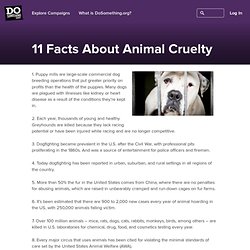
Puppy mills are large-scale commercial dog breeding operations that put greater priority on profits than the health of the puppies. Many dogs are plagued with illnesses like kidney or heart disease as a result of the conditions they’re kept in. 2. Animal Abuse - Facts & Statistics. Seal Hunt Facts. The Canadian commercial seal "hunt" is the largest mass slaughter of marine mammals in the world.
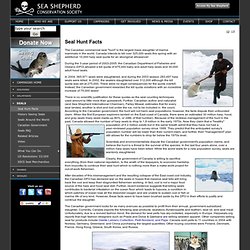
Canada intends to kill over 325,000 seals this spring with an additional 10,000 harp seal quota for an aboriginal allowance! During the 3-year period of 2003-2005, the Canadian Department of Fisheries and Oceans (DFO) allowed a kill quota of 975,000 baby and adult harp seals and 30,000 adult hood seals. In 2004, 365,971 seals were slaughtered, and during the 2003 season 283,497 harp seals were killed.
In 2002, the sealers slaughtered over 312,000 although the kill quota was set at 275,000. There were no legal consequences for the quota overkill. There is no scientific justification for these quotas as the seal counting techniques used amount to little more than guesswork. Admit that they have not had a peer-reviewed population survey since 1999. The Canadian government looks for as many avenues as possible to profit from their annual, government-subsidized slaughter.
By Adrian Raeside.